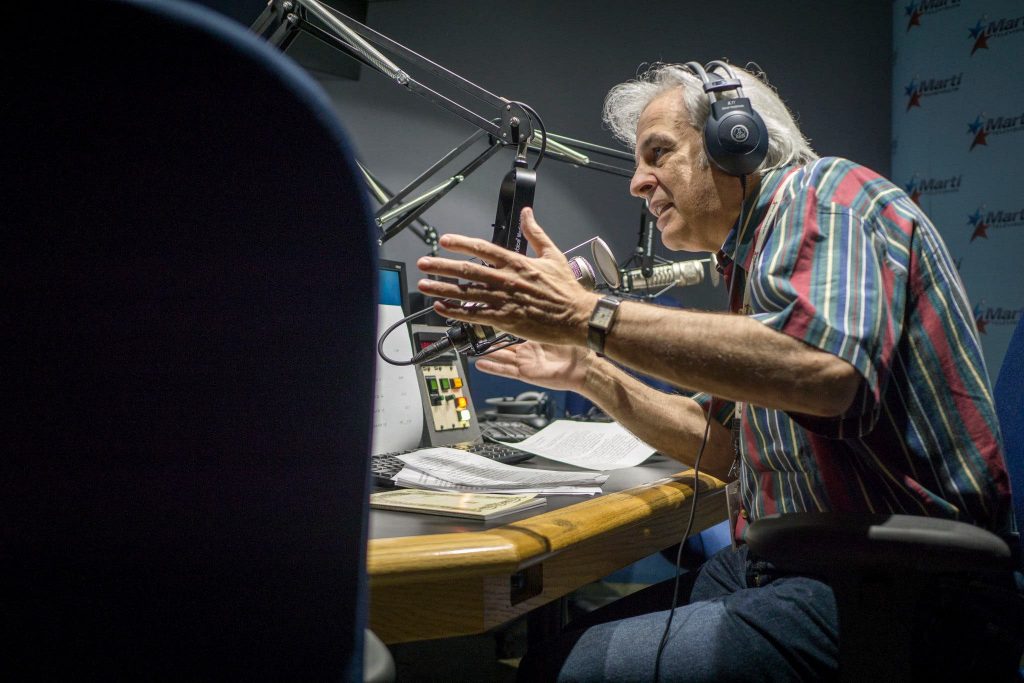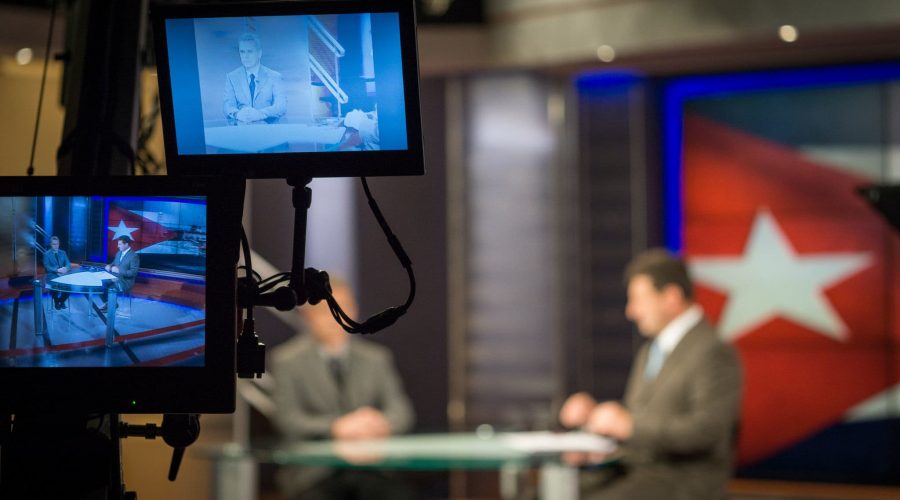For four decades, a U.S.-financed broadcaster provoked the ire of the communist government in Cuba. President Trump dismantled it in a matter of days.

For over forty years, Radio Martí, a U.S.-funded broadcaster, was a thorn in the side of Cuba’s communist government. Designed to provide uncensored news to the Cuban people, it became a symbol of the U.S.’s commitment to counteracting the Cuban regime’s control over information. However, just days after President Trump took office, this long-standing thorn was removed, and Radio Martí was abruptly shut down, a move Cuba’s communist leadership had failed to accomplish in four decades.
The closure of Radio Martí came as a shock to the journalists working there. One Saturday, while the staff was in the middle of interviewing Cuban activist Ramón Saúl Sánchez in Miami, they received an email informing them of the closure. Sánchez, known for organizing flotillas to Cuba to protest the regime, recalled that the staff was visibly confused when they received the news, unsure of what to do next. “They were very confused,” Sánchez said. “They said, ‘We think we’ve been terminated. We need to leave.’”
President Trump’s decision to shut down the broadcaster marked a dramatic turn of events. In an instant, he accomplished what Cuba’s leaders had not: taking a critical voice off the airwaves. Radio Martí’s closure was part of a broader effort by the Trump administration to implement sweeping cost cuts across U.S. government programs, with Radio Martí falling victim to these cuts, along with dozens of other agencies and programs.
For years, Radio Martí had struggled with a reputation as an outdated relic of the Cold War. Critics described it as a bloated, inefficient organization that spent tens of millions of taxpayer dollars on content many considered one-sided propaganda. The agency was often embroiled in scandals, from accusations of journalistic failures to allegations of corruption. In fact, its television station, TV Martí, was so thoroughly blocked on the island that it earned the nickname “No See TV.”
Despite these challenges, in the years leading up to its closure, Radio Martí had begun to reinvent itself. Under new management, the broadcaster focused on digital platforms such as Facebook and YouTube, reaching millions of viewers, especially as Cuba faced an unprecedented crisis. The island nation had been experiencing its largest migration in history, long power outages, and an economic collapse that left many struggling. Radio Martí’s digital reach grew, attracting millions of views, even as its traditional broadcasts were blocked.
This pivot to digital media came after Trump’s first administration slashed the broadcaster’s staff and budget by nearly 40%. However, in the aftermath, veteran journalists and filmmakers were brought in to modernize the newsroom, adapting the station for the digital age. The results were clear: the station’s content began to gain traction, especially through short online videos, drawing attention to issues like Cuba’s ongoing struggles and government censorship.
But despite this resurgence in relevance, Radio Martí’s future was uncertain. “The website was blocked in Cuba. The TV signal was blocked, the radio signal is blocked,” said Abel Fernández, the outlet’s digital and social media director, who lost his job after the closure. “But people are still reaching the content on social media. What we are doing is important, and it matters to people.”
The closure sparked reactions from U.S. politicians, including Cuban American Congress member Mario Díaz-Balart, who promised to work with President Trump to restore the broadcaster. Despite this, there was no immediate plan to reinstate Radio Martí, and the White House remained silent on the issue. Secretary of State Marco Rubio, also of Cuban descent, had previously been critical of proposed staff cuts, but the administration moved forward with its dismantling of the U.S. Agency for Global Media, which oversaw Radio Martí.
Some officials, like Mauricio Claver-Carone, President Trump’s adviser on Latin America, expressed hope that some form of Radio Martí would be preserved. “I think you can appreciate the historic importance of something and the role it plays while recognizing it needs to be updated toward the world we live in — it’s not the 80s anymore or the 90s or even early 2000s,” Claver-Carone remarked. “We can look at this as the great Martí reset.”
Radio Martí was established in 1983 by President Ronald Reagan during the Cold War, with the aim of breaking through Cuba’s tightly controlled media landscape. At the time, Cuba’s media was firmly under government control, and independent journalists were either imprisoned or forced into exile. The station began broadcasting in 1985, later expanding to television, and quickly became a key tool in the U.S. government’s strategy to challenge the Cuban regime.
However, as the years went by and the internet became more accessible in Cuba, the station’s relevance began to be questioned. Critics argued that Martí had become an outdated symbol of Cold War-era propaganda. A 2019 internal audit, commissioned by the U.S. Agency for Global Media, criticized the station for producing “bad journalism” and “ineffective propaganda.” The audit followed a highly controversial article that labeled billionaire philanthropist George Soros “a nonbelieving Jew of flexible morals,” which led to the firing of several journalists.
Despite these scandals, Radio Martí remained a crucial voice for Cubans who sought uncensored information. Its programs were loathed by the Castro regime, which had long campaigned for the station’s shutdown. Former President Raúl Castro even went so far as to demand its removal from the airwaves in 2015, accusing the U.S. of maintaining harmful programs aimed at subverting Cuban sovereignty.
Still, the station’s ability to adapt and reach Cubans via digital platforms gave it a unique distinction. Unlike other U.S.-funded outlets like Voice of America, which also faced censorship in Cuba, Radio Martí continued to serve a country where the communist regime maintained a tight grip on power. “Radio Martí was designed for a different time in the 1980s in Reagan’s battle against the Soviet Union and communism, but the fact is that Cuba never transitioned, and now we live in a digital world,” said Ted Henken, a professor at Baruch College who specializes in Cuba’s media landscape.
Henken noted that Radio Martí had undergone multiple reinventions, adapting to the changing media landscape and the digital age. The operation had become leaner and more efficient, cutting costs and eliminating the TV station. In the last couple of years, Martí’s digital presence grew dramatically. According to data from Tubular Labs, Martí had already doubled its viewership on YouTube, with 14 million views in the current fiscal year, and amassed an additional 84 million views on Facebook. Roughly 80% of its audience was in Cuba, showing the station’s relevance despite the ongoing crackdown on independent media.
Cuban journalist Mario J. Pentón, who had worked at Radio Martí for a year, expressed pride in the station’s work, especially in informing the public during crises like hurricanes, when the Cuban government’s ability to issue storm warnings was limited. “I think it has a future because I think the mission is more important than ever,” Pentón said. “Cuba is going through its worst crisis, and in the middle of this crisis, this information blackout only benefits the regime.”
Despite the station’s successes and its vital role in keeping the Cuban people informed, the future of Radio Martí is uncertain. The recent cuts, led by former journalist Kari Lake, have left many staff members without jobs, and the agency’s digital assets have been locked down. Lake, who was appointed by President Trump to oversee the dismantling of the U.S. Agency for Global Media, called the agency “rotten to the core” and claimed there were “massive national security violations” within the agency, though she provided no specific examples.
In the face of these challenges, it remains to be seen whether Radio Martí will continue to broadcast, or if it will be permanently silenced. For now, its legacy as a key tool in the U.S. government’s efforts to challenge Cuba’s authoritarian regime hangs in the balance.
